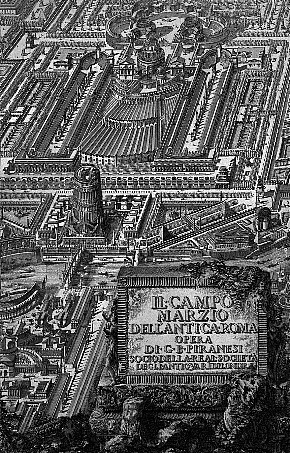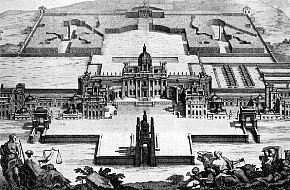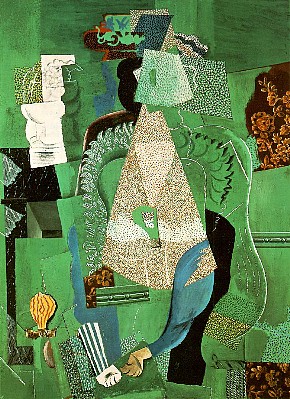70

G. B. Piranesi, frontispiece to Il Campo Marzio dell' antica Roma, 1762
1Joseph Rykwert, The First Moderns: The Architects of the Eighteenth Century (Cambridge, MA: MIT Press, 1980), Anthony Vidler, The Writing of the Walls (Princeton: Princeton Architectural Press, 1987), or Manfredo Tafuri, The Sphere and the Labyrinth: Avant-Gardes and Architecture from Piranesi to the 1970s, trans. Pellegrino d'Acierno and Robert Connolly (Cambridge, MA: MIT Press, 1987), are only the most obvious examples, to which might easily be added the writings of George Teyssot. Foucault, especially the Foucault of The Order of Things, would seem to be behind much of this work. Tafuri's chapter on Piranesi in The Sphere and the Labyrinth, "'The Wicker Architect': G. B. Piranesi, Heterotopia, and the Voyage," as well as the passages in his Architecture and Utopia: Design and Capitalist Development, trans. Barbara Luiga La Penta (Cambridge, MA: MIT Press, 1976), has been fundamental in the formulation of my approach to this project.
2Rykwert, The First Moderns, 370.
3The phrase is Rykwert's, ibid.
4Tafuri, Architecture and Utopia, 15.
5Alain Robbe-Grillet, "From Realism to Reality" (1955), in For a New Novel: Essays on Fiction, trans. Richard Howard (New York: Grove Press, 1965), 165.
| |
71
The archeological mask of Piranesi's Campo Marzio fools no one: this is an experimental design and the city, therefore, remains an unknown.
Manfredo Tafuri, Architecture and Utopia, 1973.
What is the nature of an experimental action? Is it simply an action the outcome of which is not foreseen?
John Cage, "History of Experimental Music in the United States," 1958.
To locate precisely the beginnings of modernity has been a preoccupation of recent critical and historical work.1 The work presented here seeks to suspend this "search for origins," proposing instead to enter into the classical at a strategic moment: a seam opened by Piranesi's "necrophiliac passion for the glory of ancient Rome."2 What is uncovered in the decay of the classical is not only a latent modernity (which could be a parasite upon this disintegrating body), but also the instability of the classical itself. Within Piranesi's project, the "naturalness" of the language of classical architecture (already called into question a century before) is destroyed by a contamination and fragmentation completely at odds with historically developed ideas of the wholeness of language.
By directing architecture's gaze back upon itself with this "morbid precision," by demonstrating the futility of a return to origins, Piranesi establishes in the Campo Marzio a plane--a shifting, indeterminant plane--upon which the horizons of classicism and the most radical project of modernity momentarily coincide.3 It is for this reason that
72
twentieth-century readings of Piranesi have underlined a dissonance and disjunction existing alongside the classical: Sergei Eisenstein has called this explosion of concrete relations in space an "ecstatic transfiguration"; Manfredo Tafuri has referred to the application of the "technique of shock" to the foundations of rationality. Duchamp, Picabia, Kafka, and Roussel have all echoed the spirit of Piranesi of which, Tafuri writes, "the obsessive reiteration of the inventions reduces the whole organism to a sort of gigantic 'useless machine.'"4
This project intends an excavation--through drawing and writing--of the "negative utopia" drawn by Piranesi for the Campo Marzio of Rome. I have conceived of Piranesi's large plan (the granda pianta as a site to be colonized, covered over, and modified, as when a building is erected on ruins. My attempt is to uncover and articulate the surplus residue of meaning that confirms the inexhaustibility of a work of architecture. This process of rereading establishes a relationship parallel to that which Piranesi maintained toward his own (archaeological) sources: dreamlike, inventive, and improvisational.
Given this inexhaustibility, the evident surplus meaning, I would suggest that the only way to confront adequately the project of Piranesi is with another project. I have maintained a strict parallelism of drawings and text. The drawings are independent of specific references to the text but must be read together with it. Analytical drawings map out the relation of the Piranesi reconstruction to existing ruins and the context--real and fictional--of eighteenth-century Rome. Projections and constructions suggest new ways of reading the notations of Piranesi's project. The text follows an absolutely normative pattern: site, context, program. Each of these three terms, however, is reread in light of Piranesi's own intentions, and the doubling of the middle term "text-context" intends to disrupt the stability of the three part structure.
As this project has acquired shape and certainty, I have not sought an elaboration of meaning, but rather, a greater precision of detail and description, remembering, as Robbe-Grillet said of Kafka, that "even what the hero is searching for vanishes before the obstinacy of his pursuit, his trajectories, his movements; they alone are made apparent, they alone are made real.5
| |
2013.12.23 19:47

I'm now wondering whether the above image of Castle Howard from Vitruvius Britannicus (published 1715-1725) somehow inspired the architecture of Piranesi as delineated within Il Campo Marzio (1762). Remember the...
I was prompted by the "what is experimental architecture" thread to look again at "Piranesi's Campo Marzio: An Experimental Design." After reading a few pages it became evident that the essay/project could be 'rewritten' to deliver a whole other set of results, a whole other 'history.'
By covertly publishing the Ichnographia in a second state was Piranesi himself conducting an experiment to see who would ultimately discover the two different plans?
Piranesi's language of the plans relates back to the origins of Rom(ulus and Remus) itself.
"Both Piranesi's Campo Marzio and Picasso's Dame au violon are "projects," though the former organizes an architectural dimension and the latter a human mode of behavior. Both use the technique of shock, even if Piranesi's etching adopts preformed historical material and Picasso's painting artificial material (just as later Duchamp, Hausmann and Schwitter were to do even more pointedly). Both discover the reality of a machine-universe: even if the eighteenth century urban project renders that universe as an abstraction and reacts to the discovery with terror, and the Picasso painting is conceived completely within this reality.
But more importantly, both Piranesi and Picasso, by means of the excess of truth acquired through their intensely critical formal elaborations, make "universal" a reality which could otherwise be considered completely particular."
Manfredo Tafuri, Architecture and Utopia: Design and Capitalist Development, p. 90.
There is no Picasso painting with the title Dame au violon, but it is possible that Tafuri is referring to Portrait of a Girl (1914):

Project: redraw the Ichnographia Campus Martius following the principles of Picasso's (Synthetic) Cubism.
|